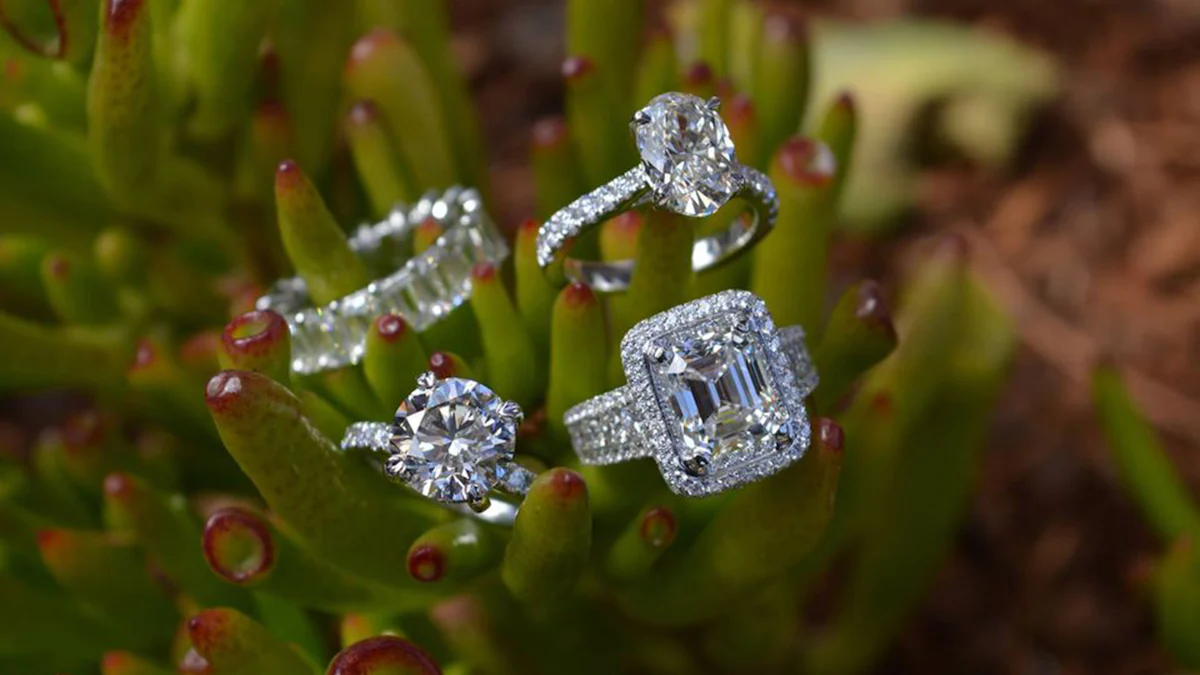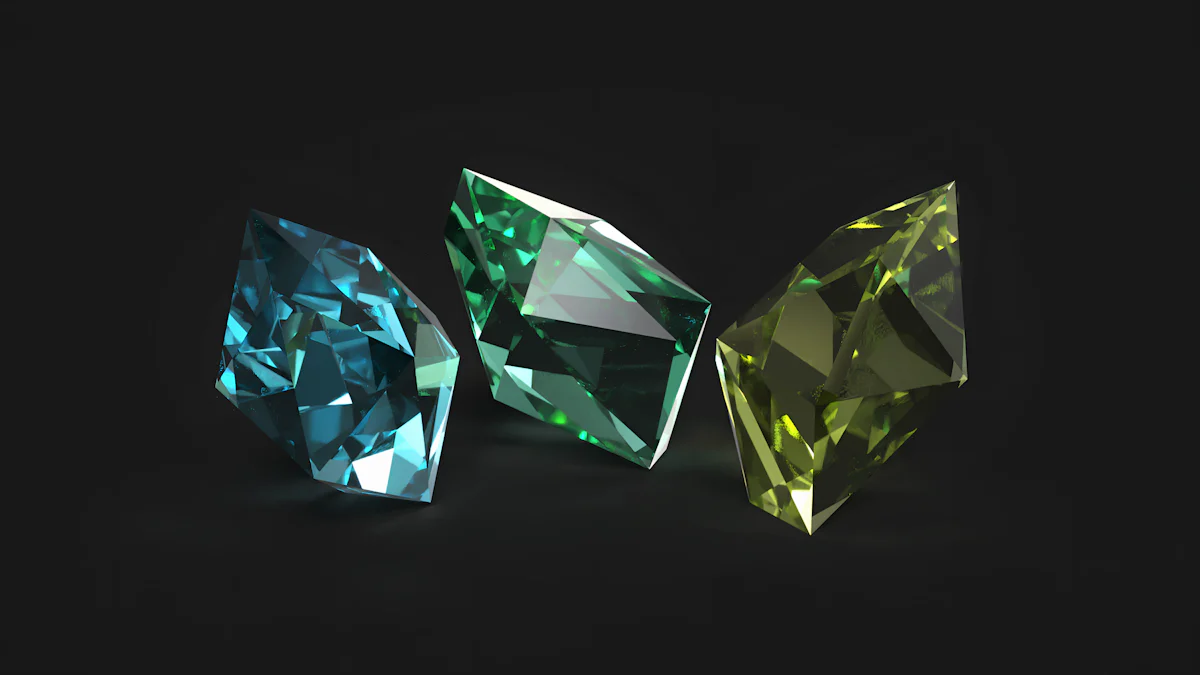Misunderstandings About Lab-Grown Diamond Value

Lab-grown diamonds are becoming a popular choice for many. These gems offer the same brilliance and beauty as mined diamonds. Understanding their value is crucial for making informed decisions. Many people wonder, "Do lab grown diamond hold their value?" The answer lies in understanding market trends and consumer preferences. Common misconceptions often cloud judgment. However, lab-grown diamonds are gaining traction due to their ethical appeal and affordability. The market for these diamonds is growing rapidly, driven by technological advancements and increased demand. Embracing lab-grown diamonds can lead to a more sustainable and cost-effective choice.
Misconception 1: Lab-Grown Diamonds Are Not Real Diamonds

Understanding the Composition
Chemical and Physical Properties
Lab-grown diamonds might sound like a science experiment, but they are the real deal. Scientists create these diamonds using advanced techniques like Chemical Vapor Deposition (CVD) and High Pressure, High Temperature (HPHT). These methods mimic how natural diamonds form deep within the Earth. The result? Diamonds with the same chemical and physical properties as those mined from the ground. Lab-grown diamonds boast the same hardness, brilliance, and fire as natural diamonds. You won't find any difference in sparkle or durability.
Comparison with Natural Diamonds
Some folks think lab-grown diamonds are just fancy imitations. That's not true. Lab-grown diamonds share identical chemical and physical traits with natural diamonds. Dr. Ulrika D’Haenens-Johansson from the Gemological Institute of America confirms this. The only difference lies in their origin. Lab-grown diamonds come from a lab, while natural diamonds form miles beneath the Earth's surface. Both types of diamonds offer the same variety in color, clarity, and carat weight. You can cut them into all the same shapes too.
Industry Standards and Certifications
GIA and Other Certifications
You might wonder if lab-grown diamonds get the same recognition as natural ones. The answer is yes. Lab-grown diamonds receive certifications from reputable organizations like the Gemological Institute of America (GIA). These certifications confirm that lab-grown diamonds meet the same standards as natural diamonds. The GIA evaluates them based on the same criteria, ensuring quality and authenticity.
Market Acceptance
The jewelry market has started to embrace lab-grown diamonds. Consumers appreciate their ethical appeal and affordability. The fashion and jewelry industries now recognize the value of lab-grown diamonds. As more people learn about their benefits, demand continues to grow. Lab-grown diamonds offer a sustainable and cost-effective alternative without sacrificing quality or beauty.
Misconception 2: Do Lab-Grown Diamonds Hold Their Value?
Market Trends and Demand
Current Market Dynamics
Lab-grown diamonds have sparked curiosity. Many wonder, "Do lab grown diamond hold their value?" The answer depends on market dynamics. Lab-grown diamonds typically cost less than natural ones. This affordability attracts many buyers. The market for lab-grown diamonds continues to expand. More consumers appreciate the ethical benefits.
Natural diamonds often hold value better due to rarity. The limited supply of natural diamonds adds to their appeal. Lab-grown diamonds face a different scenario. The market may become saturated over time. This could impact resale value. However, growing demand suggests a positive trend.
Future Projections
Future projections show interesting possibilities. The question remains: do lab grown diamond hold their value? As technology advances, production costs may decrease. This could lead to even more affordable prices. Consumer awareness continues to rise. People recognize the benefits of lab-grown diamonds.
The market for lab-grown diamonds might grow stronger. Increased demand can influence value positively. Natural diamonds may still hold a unique place. Their rarity ensures continued interest. Lab-grown diamonds offer a sustainable choice. This appeals to environmentally conscious buyers.
Factors Influencing Resale Value
Quality and Size
Quality plays a crucial role in value. High-quality lab-grown diamonds attract attention. Size also matters in determining worth. Larger diamonds often hold more value. Consumers seek quality and size when buying diamonds.
Lab-grown diamonds can match natural ones in quality. Advanced technology ensures this. The question, "Do lab grown diamond hold their value?" relates to these factors. Quality and size impact resale potential. Buyers look for these attributes.
Brand and Certification
Brand reputation influences value. Well-known brands often command higher prices. Certifications add credibility. Trusted organizations certify lab-grown diamonds. This assures buyers of quality.
The Gemological Institute of America provides certifications. These confirm the authenticity of lab-grown diamonds. Brands with strong reputations attract buyers. Certifications enhance trust. Both factors contribute to resale value.
Understanding these elements helps answer, "Do lab grown diamond hold their value?" Quality, size, brand, and certification all play a part. Buyers consider these when making decisions.
Misconception 3: Lab-Grown Diamonds Are Cheap Imitations
Cost of Production
Technological Advancements
Lab-grown diamonds might seem like a budget option, but their creation involves cutting-edge technology. Scientists use methods like Chemical Vapor Deposition (CVD) and High Pressure, High Temperature (HPHT) to grow these gems. These techniques replicate the natural diamond formation process. The result is a diamond with the same brilliance and durability as a mined one. Advanced technology ensures lab-grown diamonds achieve exceptional clarity and color. You get a gem that rivals the beauty of its natural counterpart.
Investment in Research
The production of lab-grown diamonds requires significant investment in research. Laboratories constantly innovate to improve quality and efficiency. This dedication to research results in diamonds that often surpass natural ones in purity. The controlled environment allows for continuous quality checks. Manufacturers can produce flawless diamonds at a fraction of the cost of mining. This makes lab-grown diamonds more accessible without sacrificing quality.
Price Comparison with Natural Diamonds
Initial Purchase Price
Lab-grown diamonds offer a more affordable option compared to natural diamonds. The initial purchase price is significantly lower. This affordability attracts many buyers looking for value. Despite the lower cost, lab-grown diamonds maintain high standards of quality. You get a stunning gem without breaking the bank. The price difference stems from the reduced expenses in mining and transportation. Lab-grown diamonds provide an economical choice for those seeking beauty and brilliance.
Long-term Value
The long-term value of lab-grown diamonds continues to evolve. Some believe these diamonds lack lasting worth, but the market tells a different story. As consumer awareness grows, demand for lab-grown diamonds increases. This demand influences their resale value positively. While natural diamonds hold a unique place due to rarity, lab-grown diamonds offer sustainability. Environmentally conscious buyers appreciate this aspect. The market for lab-grown diamonds shows promising growth, making them a valuable investment over time.
Misconception 4: Lab-Grown Diamonds Are Environmentally Harmful

Environmental Impact of Production
Energy Consumption
Lab-grown diamonds often get a bad rap for energy use. The truth is that these gems require less energy compared to mining natural diamonds. Advanced technology helps reduce the energy needed. This makes lab-grown diamonds a more sustainable choice.
Carbon Footprint
Concerned about carbon emissions? Lab-grown diamonds emit less than 5% of the CO2 compared to mined diamonds. This means a much smaller carbon footprint. Choosing lab-grown diamonds supports eco-friendly practices.
Comparison with Natural Diamond Mining
Ecological Consequences
Natural diamond mining can wreak havoc on ecosystems. The process alters landscapes and disrupts habitats. Lab-grown diamonds avoid these issues. Production happens in controlled environments. This means no harm to natural habitats.
Ethical Considerations
Ethical concerns often surround natural diamond mining. Issues like unfair labor practices and environmental damage arise. Lab-grown diamonds sidestep these problems. The production process ensures ethical standards. You can feel good about your purchase.
Misconception 5: Lab-Grown Diamonds Lack Emotional Value
Cultural and Emotional Significance
Changing Perceptions
Lab-grown diamonds often face skepticism about emotional value. Many people assume that only natural diamonds hold sentimental worth. This belief is changing. More people now see lab-grown diamonds as meaningful symbols of love and commitment. The ethical and sustainable nature of these gems adds to their appeal. Couples appreciate the chance to make a positive impact with their choices.
Personal Stories and Testimonials
Personal stories highlight the emotional significance of lab-grown diamonds. Kultivated Karats offers a range of options for personalization. Couples can choose diamond shapes, sizes, colors, and clarity. This customization allows for a unique expression of love. One couple shared, "Every couple has a unique love story, and lab-grown diamonds offer the opportunity for a truly personalized expression of that story." These gems become more than just jewelry. They represent personal journeys and cherished memories.
Jawaharlal, a satisfied customer, expressed, > "We all make a footprint, and I know every one of my choices has implications. Choosing a lab-grown diamond was a way to still have that sparkle, have that symbol of love -- but do it in a way that wasn't going to feel ethically compromising."
Customization and Personalization
Unique Designs
Lab-grown diamonds offer endless possibilities for unique designs. Jewelers can create custom pieces that reflect individual styles. You can select from various cuts and settings. This flexibility allows for truly one-of-a-kind creations. Personalized designs add a special touch to any occasion. Whether it's an engagement ring or a gift, lab-grown diamonds provide a canvas for creativity.
Symbolic Meanings
Lab-grown diamonds carry symbolic meanings. These gems can represent new beginnings, ethical choices, and sustainable living. The decision to choose a lab-grown diamond often reflects personal values. Many people find comfort in knowing their purchase aligns with their beliefs. The symbolism behind lab-grown diamonds enhances their emotional value. Each gem tells a story of conscious decision-making and love for the planet.
Lab-grown diamonds offer real value and beauty. These gems provide a sustainable choice for conscious buyers. Understanding their benefits helps you make informed decisions. Exploring lab-grown diamonds opens up new possibilities for unique designs and ethical choices. The Expert Opinion in the diamond industry highlights the growing acceptance of lab-grown diamonds. The team behind these innovations brings expertise and dedication to every gem. Embrace lab-grown diamonds for a meaningful and responsible purchase.
See Also
Lab Grown Diamonds: A Cost-Effective Option?
3 Carat Lab Grown Diamond: Pricing Breakdown
2 Carat Lab Grown Diamond: Price Analysis

